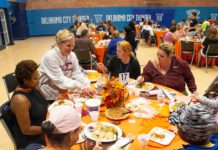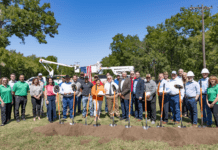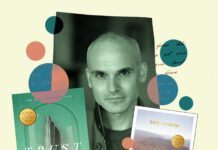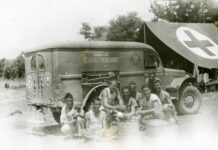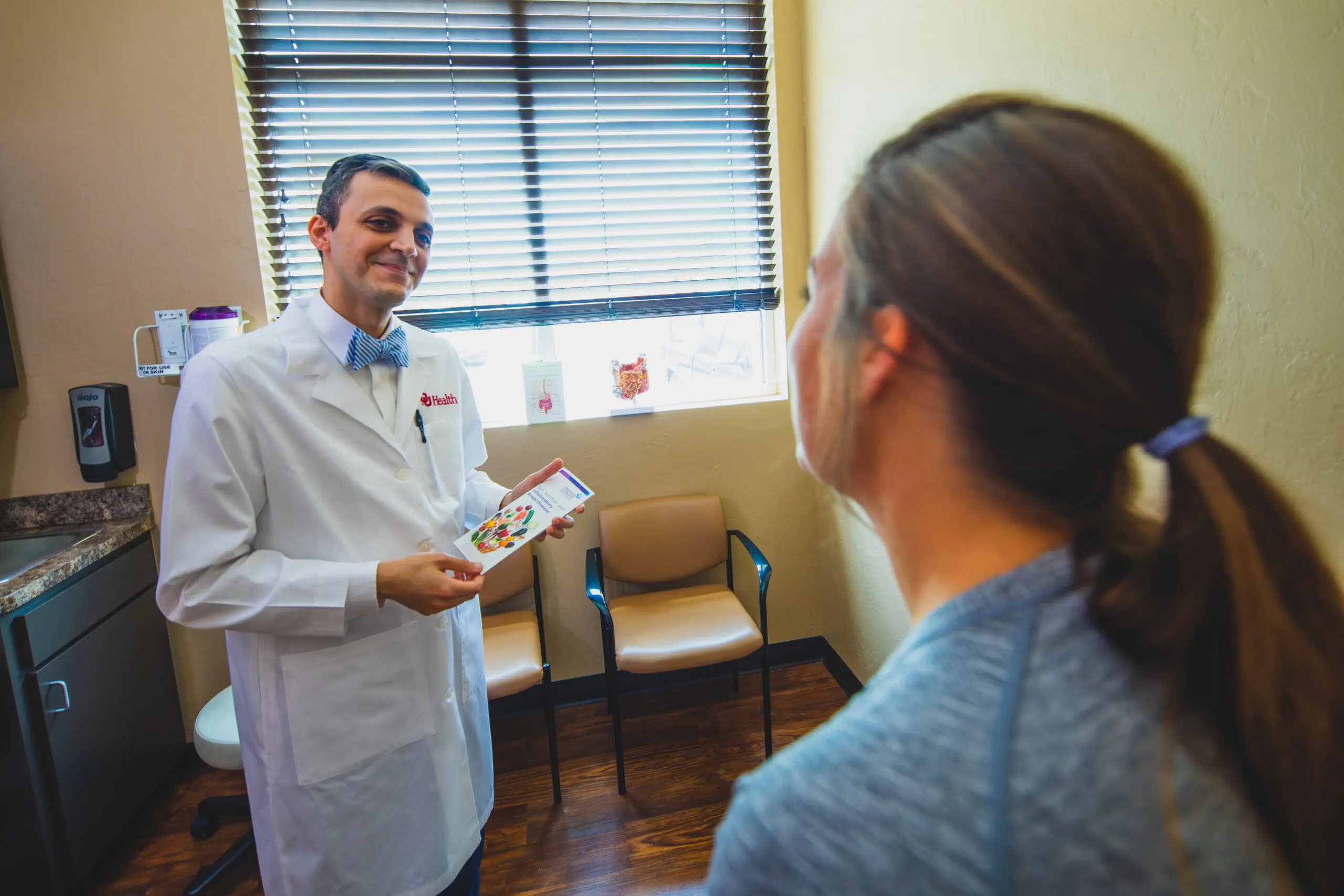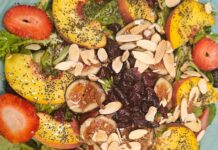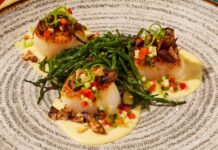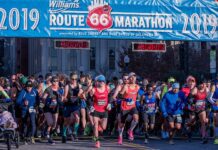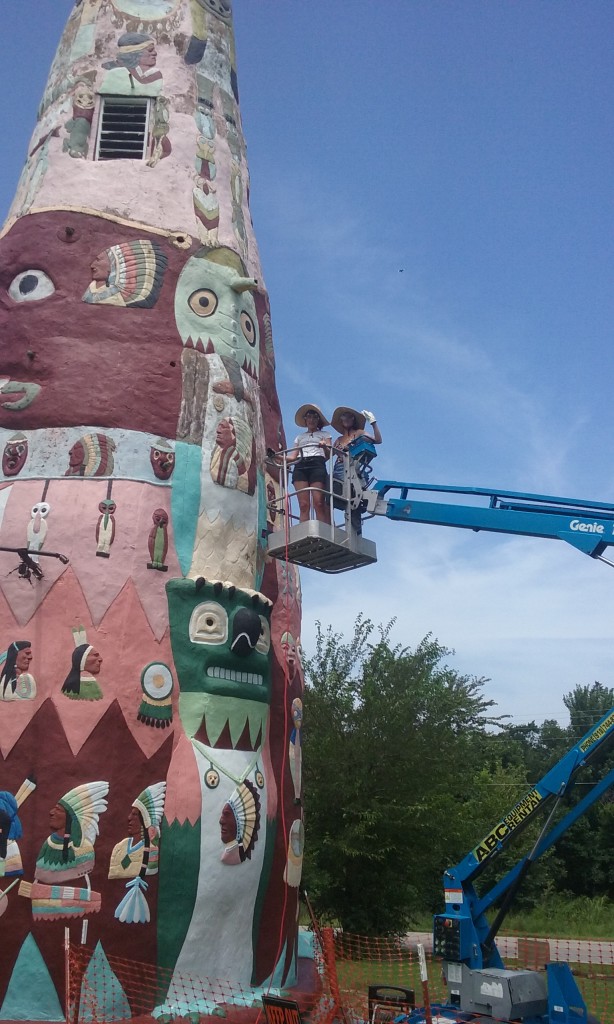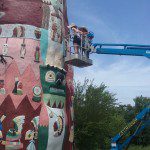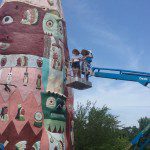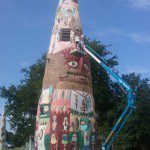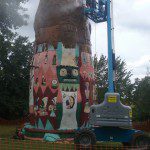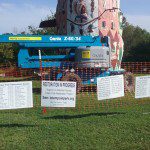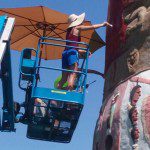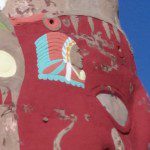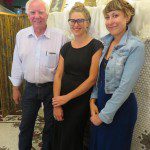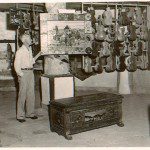In July, after hurdling the hitch, Turner and Hoover began where a previous restoration, ending in 2009, left off, 25 feet in the air. Break the remaining 65 feet into three sections, they worked their way to the top, one day at a time.
The days were long and grueling. Staying at a motel about seven miles from the park, they’d wake up each morning around 6 and work until sundown or their fingers lost function.
While they painted, they primed areas where interior metal protruded and caulked cracks caused by the elements and time. They had line drawings of all the designs, Turner says, and a chart that laid out which colors go where. They’d brave the heat by hiding in the shifting shade of the totem pole, working their way around its width as the earth moved on its axis. At night, retreating to their motel, they’d muster the energy to cook a meal.
Working with paintbrushes ranging in size from a needlepoint to a pocket dictionary, some designs were more intricate than others.
“The Indian headdresses are most detailed,” Turner says. “They have five to seven colors for each headdress.”
The paint didn’t make the details any easier to navigate.
“[It] is like melted chocolate, really thick,” Turner says. “[And] you’re not working on a smooth structure … it was very difficult.”
But with each stroke, the goal only became clearer. The park, which up until one year ago was a silent unknown to both of these native Oklahomans, now speaks volumes, and they want to continue telling the story of the totem pole and of Galloway, his artistry and Oklahoma.
“It’s one of the coolest structures I’ve ever seen. It has a lot of history. Ed Galloway was in the military in the Philippines, and you can kind of see these southeast Asian figures and creatures, and you see a lot of Native American imagery … there’s lots of Oklahoma imagery … I think there are over 200 designs,” Turner says. “I think also, the concept of a totem pole is really beautiful in itself. It’s a tribute to your ancestors more or less. It’s a good practice in general just to learn about why it’s important. We’re building on our past.”
As their summer project came to a close, two-thirds of their goal reached completion. The fourth, highest section will have to wait until next summer, when the two reunite from opposite coasts, taking the scaffold to the height of their vision.
While still excited about the future of the park, the totem pole and all its possibilities, for now, good food, a nice massage and the comfort of home sounds really good, Turner says.
“I need to rest up for a year, and then come back,” she adds.


